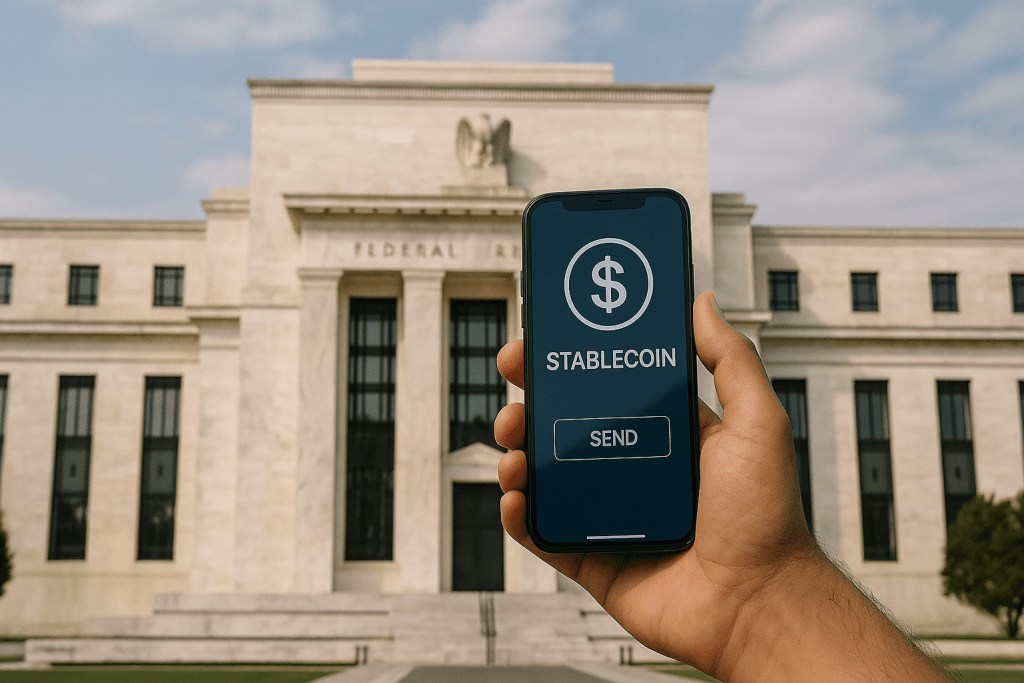Federal Reserve Governor Stephen Miran said growing demand for dollar-pegged stablecoins could push down interest rates, putting a new factor on the Fed’s radar.
According to a speech he gave at the BCVC Summit on November 7, stablecoins that channel savings into dollar assets may raise the supply of loanable funds and lower the Neutral interest rate, or “R” star.
Stablecoin Growth And Scale
Based on reports compiled by Fed staff, private-sector estimates place stablecoin adoption between $1 trillion and $3 trillion by the end of the decade — a jump large enough to matter for markets and policy.
Miran compared the possible scale of stablecoin demand to the Fed’s own purchases during the COVID-era stimulus and noted that under $7 trillion in Treasury bills are outstanding today, making any major new buyer meaningful.
How It Could Lower Rates
Researchers have started to put numbers on the effect. Work cited in Miran’s remarks estimates stablecoins, if widely used and backed by US securities, might nudge interest rates down by as much as 40 basis points. That kind of shift in R rating would change what counts as a neutral policy stance and could prompt the Fed to set lower policy rates than otherwise.
Big Buyers And Reserve Holdings
Reports and working papers point to one tangible channel: where stablecoin issuers park their reserves. Evidence shows some large issuers have been big buyers of short-term Treasury bills.
BTCUSD trading at $106,041 on the 24-hour chart: TradingView
For example, one study found Tether held an estimated $98 billion in T-bills by Q1 2025, roughly 1.6% of outstanding T-bills, and that such buying has been linked to lower short-term yields. That suggests stablecoin flows can have real effects on front-end rates.
Risks And Policy Choices
Miran told listeners that regulatory clarity will shape the path forward. He praised proposals like the GENIUS Act for forcing issuers to hold safe, liquid dollar assets, but warned that how stablecoins are financed matters: if issuance simply repackages existing dollar holdings, the effect on loanable funds will be small. Policymakers must weigh the boost to dollar demand against possible strains on banks, money markets, and the Treasury market.

Image: Cato Institute
Reports have disclosed that the scale and speed of adoption remain uncertain. If the higher forecasts play out, central bankers will need to consider stablecoin demand as part of the mix when setting rates.
For investors and officials alike, the message is plain: stablecoins are not just a payments tool anymore. They are a potential macroeconomic force, and their growth will be watched closely by the Fed and other authorities.
Featured image from Gemini, chart from TradingView

Editorial Process for bitcoinist is centered on delivering thoroughly researched, accurate, and unbiased content. We uphold strict sourcing standards, and each page undergoes diligent review by our team of top technology experts and seasoned editors. This process ensures the integrity, relevance, and value of our content for our readers.
Credit: Source link
